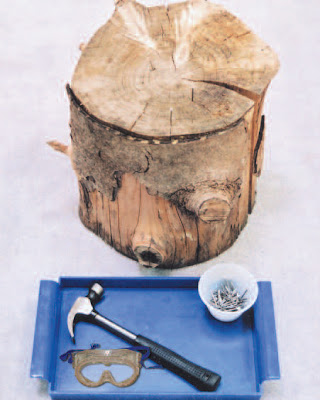
Opportunities for Movement in the Montessori Classroom: Kinesthetic Learning
We use the term ‘kinesthetic learner’ to mean learning through movement. More often than not, kinesthetic learning happens with the hands. Many Montessori materials require this type kinesthetic movement since Dr. Montessori believed that “what the hand does, the brain remembers.” I have learned from my own Montessori classrooms that children, and especially boys, need movement that encompasses more than just the hand. They need whole body movement and the freedom to move throughout the day.
Some Montessori works are whole body, heavy works. Gardening, shoveling snow, raking leaves, vacuuming, washing windows, and pounding nails into a stump are excellent ways to move and refocus energy.

Ninety percent of the world’s Ritalin is prescribed in the United States.
Barry MacDonald, Canadian educator and registered clinical counselor, offers these suggestions to help find non-distracting ways to help boys (and girls) remain engaged and keep moving in the classroom (McDonald, 2009):
Consider non-distracting ways students can be active while working.
The Montessori classroom has many opportunities for children to be active. For example, children have the option of working on the floor, spreading out and taking more space than if they were confined to a desk. As well, there is a variety of furniture to sit on. Pillows and rocking chairs were always a favorite in my classrooms. Children are free to move about the classroom at will, gathering materials, having snack, or taking a break with friends as they choose.Allow children to “fidget” or use pocket toys as needed.
At first, I was skeptical of this. But then I recalled my own experiences of when this idea provided a great way for children to refocus negative energy. I know a second grade boy who would regularly get out modeling clay, work with it for 10–15 minutes, put it away, and get back to work. Another boy kept a “Koosh” ball with him and would tussle it gently about while working out math problems.Give permission to take a break as needed.
All my students knew that if they needed to take a break, they only had to tell me where they were going and had to stay within sight of the classroom. As spring approached, I found more students taking advantage of this. They did not go out to play; they went to work off their physical energy. It was the rare occasion when I had to call them back in. They were all very good at coming back and getting back to work. I also kept a tub of Lego building blocks in a back corner for inclement weather days, when going outside was not an option.The worst thing you can do to any student is to punish by restricting movement.
Have you ever taken away recess or gym class because a child cannot seem to settle down? This is the child that needs movement the most! Behavior problems are bound to increase if there is no outlet for physical energy.© North American Montessori Center - originally posted in its entirety at Montessori Teacher Training on Tuesday, April 30, 2013.

As a program specialist who works with all ages, I regularly take a group of boys out to the track to run races until they are panting and begging for water. They love the movement and competition, but the best part is that when they go back to class, they get in MUCH lest trouble with their teachers.
ReplyDelete